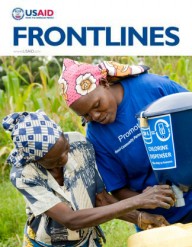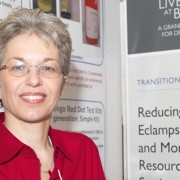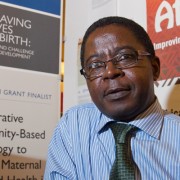 Dr. Edgar Kestler is the director of the Epidemiological Research Center in Sexual and Reproductive Health in Guatemala. His work to address maternal and newborn deaths in the northern part of the country is getting a lift from Saving Lives at Birth.
USAID
Dr. Edgar Kestler is the director of the Epidemiological Research Center in Sexual and Reproductive Health in Guatemala. His work to address maternal and newborn deaths in the northern part of the country is getting a lift from Saving Lives at Birth.
USAID
 Dr. Edgar Kestler is the director of the Epidemiological Research Center in Sexual and Reproductive Health in Guatemala. His work to address maternal and newborn deaths in the northern part of the country is getting a lift from Saving Lives at Birth.
USAID
Dr. Edgar Kestler is the director of the Epidemiological Research Center in Sexual and Reproductive Health in Guatemala. His work to address maternal and newborn deaths in the northern part of the country is getting a lift from Saving Lives at Birth.
USAID
In 2004, Guatemalan officials set out to address the country’s deplorably high maternal mortality rates. With help from partners like USAID and the World Bank, the country focused investments in the rural north of the country, updating clinics, encouraging women to use birth attendants and deliver in health facilities, and expanding the number of those health facilities to 63 from just 11. It didn’t work.
“Unfortunately, as of 2012, there was no observed decrease in maternal or newborn death,” says Dr. Edgar Kestler, the director of the Epidemiological Research Center in Sexual and Reproductive Health (CIESAR) in Guatemala.
Maternal mortality rates are 260 per 100,000 in some of the worst hit northern departments. And neonatal mortality for the country is 23 deaths per 1,000 live births—with rates skyrocketing to 52 deaths per 1,000 births in the north.
“Guatemala’s northern departments are known as the ‘corridor of death’ for their extremely high maternal mortality ratios,” said Kestler, who will use a Saving Lives grant to address the situation in four departments—Alta Verapaz, Huehuetenango, Quiché and San Marcos.
The project, Que Vivan Las Madres, is composed of three parts: a low-tech birth simulator to walk midwives and others through a typical childbirth, a push to connect midwives to the formal health-care system, and a campaign to encourage expectant mothers to choose health facilities over their homes when it comes time to give birth.
Already, the three-part intervention is being tried—with some success, Kestler adds—on a small scale in 30 communities, with half serving as a control group.
“Our idea represents a creative and unconventional approach to improving childbirth outcomes because it combines several … strategies that work together synergistically to attack a difficult problem,” he said in an email.
“Although the process of cultural change is slow, we believe this combined effort will push northern Guatemala toward an eventual tipping point where skilled birth attendance, delivered in a culturally respectful way, can become the norm,” he added. “We strongly believe in the long-term life-saving potential of our project.”
Kestler said he personally felt satisfaction that the project is well underway “in a country where there is no culture for research.” The prize money is great, he added, “but more important is that this award is aimed to improve the health of the indigenous, rural and poor women in the country.”











Comment
Make a general inquiry or suggest an improvement.